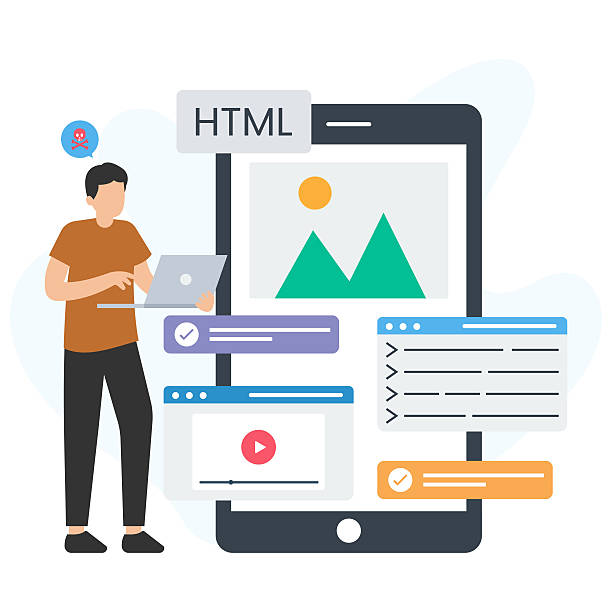Introduction to the Importance of Personal Website Design in the Digital Age
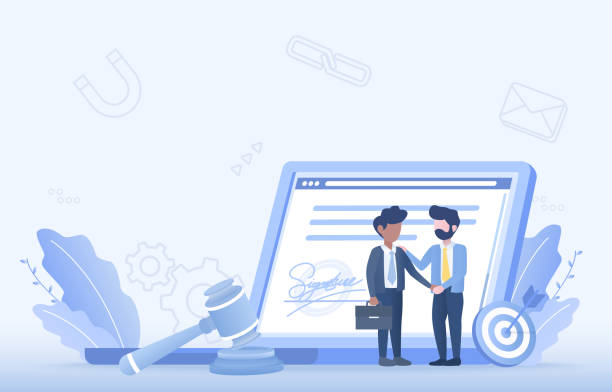
In today’s world, where physical boundaries have faded and communication has largely shifted to the internet, having a personal website is no longer a luxury choice, but a necessity.
Designing a personal website allows you to build your digital identity and have complete control over how you present your information, skills, and experiences to the world.
In this explanatory section, we explore why this is so vital.
Your personal website is a unique platform to showcase your portfolio, articles, resume, and even your personal thoughts.
This is especially important for professionals, artists, writers, and entrepreneurs who are looking to expand their reach and network.
The thought-provoking content in this regard is whether merely having a presence on social media is enough to build a personal brand, or if a central, independent base is needed? The definitive answer is that social networks are rented platforms, while a personal website is your exclusive property.
The main goal of #personal website design, #personal branding, and #reaching a wider audience.
A personal website can act as the control center for your online presence, where you can provide information in full detail and without the limitations of other platforms.
This environment allows you to showcase your creativity and convey your unique style and tone to visitors.
From a professional perspective, SEO (Search Engine Optimization) and optimization for search engines on a personal website help you appear higher in search results and introduce more people to your expertise.
This analytical approach shows that without a strong and independent online presence, many job opportunities, professional collaborations, and even personal connections are lost.
Today, potential employers, clients, and colleagues first look for you online.
If they find a professional and up-to-date website for you, their credibility and trust in you will significantly increase.
Therefore, personal website design is not just a marketing tool, but a long-term investment in your professional future.
It is also an educational platform for you to improve your digital skills and for others to benefit from your experiences.
Are you frustrated with the low conversion rate of your online store?
RasaWeb is your definitive solution with professional e-commerce website design!
✅ Increase your sales and revenue
✅ Unparalleled user experience for your customers
⚡ Get a free consultation now!
Strategic Planning for Creating a Powerful Individual Website

Before you even write a single line of code or choose a template, there’s a crucial step in the personal website design process: strategic planning.
This guiding phase builds the foundation for your website’s success and helps you avoid future confusion.
First, you need to define the main goal of your website.
Is your goal to showcase your portfolio, share knowledge, attract clients, or simply create a personal online space? The answer to this question determines the overall direction of your website.
Next, you need to identify your target audience.
Who will visit your website? What are their interests? This information helps you optimize the website’s content and design based on their needs.
In this instructional phase, you should gather your initial content.
Organize your resume, projects, articles, images, videos, and anything else you want to display.
Also, think about the overall structure of your website; what pages do you need? (e.g., About Me, Portfolio, Contact, Blog).
This is an explanatory step that provides a roadmap for your site’s final structure.
Choosing a suitable domain name is also part of this planning.
Your domain name should be memorable, relevant to your activity, and available.
Analytically, the domain name directly impacts your branding and SEO.
This stage of individual website creation requires deep thought and foresight.
A thought-provoking question in this section could be: how can one ensure that the initial planning covers all future needs? The answer is that planning should be flexible and allow for future changes and updates.
These guidelines help you create a strong and sustainable website that achieves your goals.
Choosing the Right Platform and Tools for Personal Portal Development
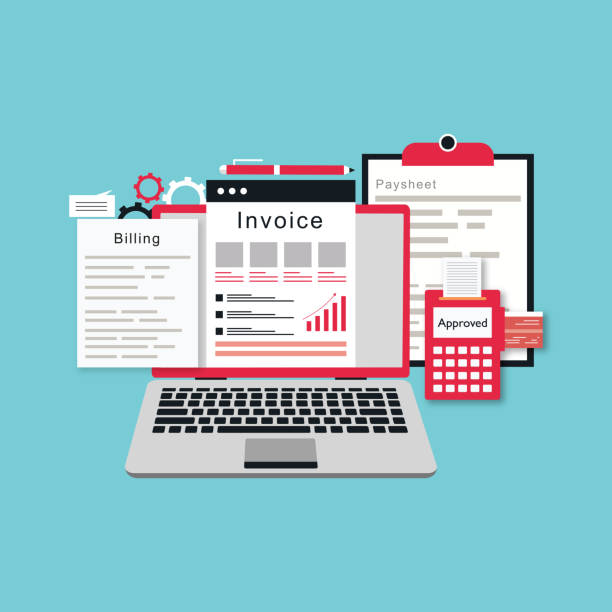
After the planning phase, it’s time to choose the tools and platforms you need for your personal portal development.
This specialized section helps you make informed decisions and avoid wasting time and resources.
There are various platforms for building a personal website, each with its own advantages and disadvantages.
WordPress, Wix, Squarespace, and open-source site builders (like Jekyll or Hugo) are among the most popular options.
Platform selection should be based on your technical knowledge level, budget, and the degree of control you want over your website.
For example, WordPress is suitable for those who want high flexibility and full control, while Wix is ideal for beginners looking for a quick solution without needing to code.
This is an educational section that familiarizes you with the available options.
Choosing hosting is another important step.
Hosting (web space) is where your website files are stored and made accessible via the internet.
There are many hosting providers offering various services, including shared hosting, VPS, and cloud hosting.
For a personal website, shared hosting or an affordable cloud service is usually sufficient.
Below is a comparison table of popular platforms for personal website design that can help you make a decision.
This analytical table provides the necessary information for smart choices and is a practical guide.
Additionally, other tools such as photo editors (Photoshop, GIMP), SEO tools (Google Analytics, Google Search Console), and design tools (Figma, Adobe XD) are also essential for completing and improving your website.
Using these tools will help you have a completely professional and user-friendly personal website design.
| Platform | Advantages | Disadvantages | Suitable For |
|---|---|---|---|
| WordPress | High flexibility, many plugins, large user community | Steeper learning curve, user responsible for security | Users with medium technical knowledge, high customization needs |
| Wix | Easy to use, drag-and-drop, internal hosting | Limited flexibility, less optimized SEO | Beginners, need for quick setup |
| Squarespace | Beautiful and professional templates, good support | Higher price, limited control over code | Artists, photographers, creative bloggers |
Visual Design and User Experience in Personal Websites
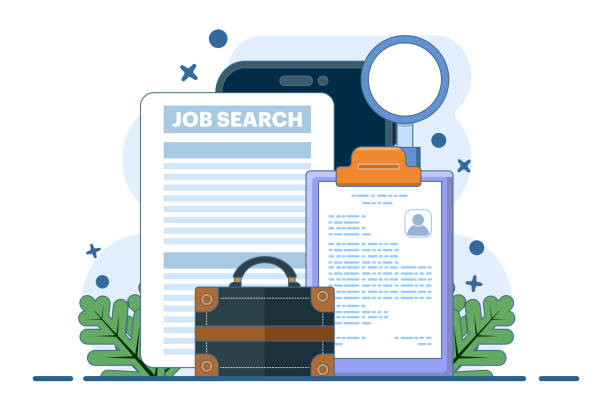
Visual appeal and User Experience (UX) are two fundamental pillars in the success of any website, especially in personal website design.
A website with an attractive and user-friendly design encourages visitors to stay longer and interact with your content.
This specialized and analytical section shows you how to create a pleasant visual experience and smooth functionality.
The choice of colors, fonts, images, and the arrangement of elements all play a role in creating the overall feel and atmosphere of your website.
Colors should align with your personality and personal brand, and fonts should be legible and appealing.
Proper use of white space allows your content to breathe and prevents visual clutter.
User experience is not limited to appearance; it also pertains to the usability and ease of navigation on the website.
Users should be able to easily find the information they need and move through different sections of the website without any problems.
Clear menus, distinct Call to Action buttons, and logical internal links all contribute to improving the user experience.
Your website should be responsive; meaning it should display correctly on different screen sizes, from desktops to mobiles and tablets.
This educational aspect is very important because a large portion of web traffic comes from mobile devices.
The thought-provoking content here is: how can one create a unique visual design that is both optimized and user-friendly at the same time? The answer lies in balancing creativity with adherence to web design principles.
Your personal website design should tell a story and engage the visitor.
By following these guidelines, your website will not only look beautiful but also become a powerful tool for connecting with your audience.
Are you tired of your company website not meeting your expectations? With RasaWeb, design a professional website that truly represents your business.
✅ Increase attraction of new customers and sales leads
✅ Boost your brand’s credibility and trust with your audience
⚡ Get a free website design consultation now!
Creating Engaging Content and Optimizing for Search Engines (SEO)
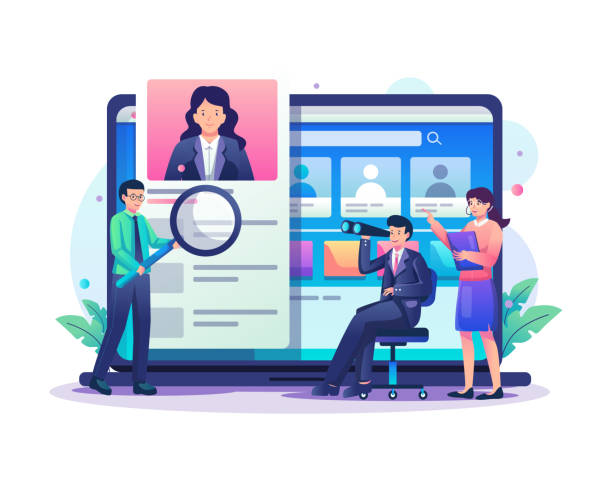
Content is king; this phrase in the world of web, especially for personal website design, never gets old.
Producing engaging, high-quality content relevant to your field is the cornerstone of attracting and retaining an audience.
Your content should not only be informative and valuable but also written in a way that is optimized for search engines (SEO).
This instructional and guiding section helps you write content that both attracts users and improves your website’s ranking in search results.
To start, identify keywords related to your expertise and content.
Naturally incorporate these words into your titles, body text, and meta descriptions.
Overuse of keywords (Keyword Stuffing) not only doesn’t help your SEO but can actually harm it.
Your content can include blog posts, case studies, videos, infographics, and even podcasts.
Variety in content format can add to your website’s appeal.
Always try to write content that answers your audience’s questions and provides real value to them.
Regular content updates are also very important.
Search engines prefer websites that consistently publish fresh and relevant content.
This is an important news point for improving SEO rankings.
To optimize images, use appropriate alt tags and reduce their size as much as possible to increase site loading speed.
Site speed is an important factor in SEO and user experience.
From an analytical perspective, it can be said that the more comprehensive, accurate, and responsive your content is to the audience’s needs, the greater your chance of attracting organic traffic and the success of your personal website design.
This specialized process requires patience and persistence.
Security and Maintenance of Your Personal Website
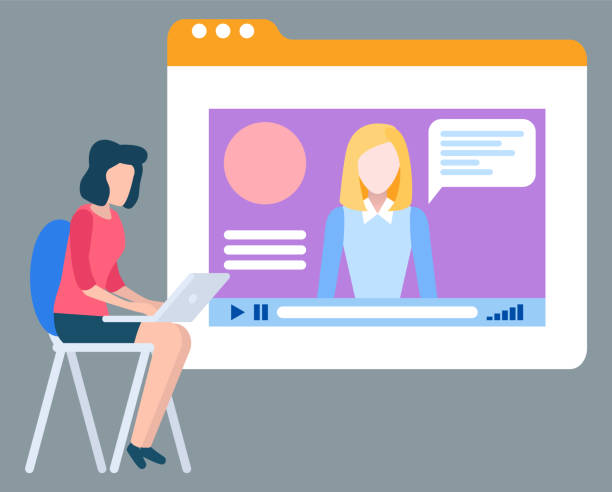
After designing your personal website and publishing it, your work is not over; it has just begun! Website security and maintenance are two vital aspects that are often overlooked, but they are essential for your site’s long-term stability and success.
This explanatory and specialized section shows you why these matters are important and how to manage them.
One of the first steps to securing your website is installing an SSL certificate.
SSL secures your website with HTTPS, which not only encrypts user data but also helps improve your site’s SEO.
Search engines prioritize websites with SSL.
Using strong and unique passwords for your website’s admin panel and regularly updating them is also highly important.
If you use platforms like WordPress, regularly updating the WordPress core, themes, and plugins is highly important.
These updates often include security patches to close vulnerabilities.
Additionally, using a security plugin (such as Wordfence or Sucuri) can provide an extra layer of protection.
Regular website backups are also vital actions.
In case of any security issue, technical error, or even human mistake, having a backup allows you to quickly restore your website.
This is a very important guideline.
A thought-provoking question here could be: Is website maintenance merely a technical task, or is it an important part of a personal branding strategy? The answer is that a secure and healthy website demonstrates your professionalism and builds visitor trust.
A personal website design that is weak in terms of security can seriously harm your reputation.
Therefore, investing time and effort in security and maintenance is a smart move.
Marketing and Promotion of Personal Website for Increased Visibility
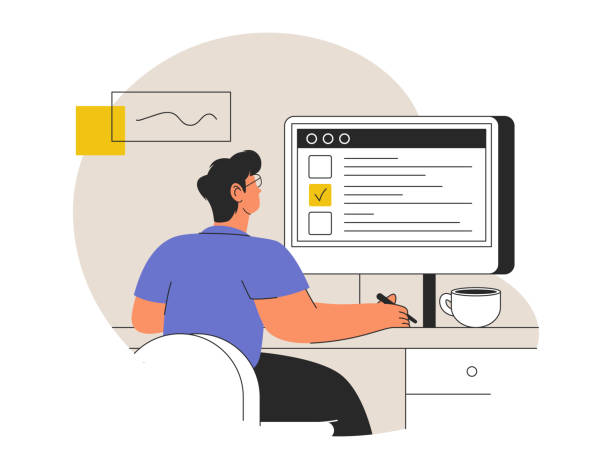
After completing your personal website design and content creation, the next step is marketing and promoting it.
Without effective marketing, even the best website won’t be seen.
This guiding and informative section helps you adopt effective strategies to increase your website’s visibility.
Using social media is one of the fastest ways to get your content to your audience.
Regularly share your website’s content on platforms like LinkedIn, Twitter, Instagram, and Facebook.
Interacting with your audience on these platforms and encouraging them to visit your website can bring significant traffic.
This is an educational approach to utilizing the potential of social media.
Email marketing is also a powerful tool for maintaining communication with your audience and bringing them back to your website.
By collecting visitors’ email addresses (with their permission) and sending newsletters, updates, and exclusive content, you can build a loyal community.
Participating in online forums and specialized groups related to your field, and sharing your website link in your signature or helpful responses, is another way to attract traffic.
Collaborating with other bloggers and influencers in your niche (guest posting) can also help increase your credibility and visibility.
This is a specialized aspect of marketing.
A thought-provoking question in this section is: How can one attract targeted traffic and convert visitors into loyal customers or followers? The answer lies in providing continuous value, active engagement, and using smart Calls to Action (CTAs).
Below is a table of personal website marketing methods.
This explanatory information helps you develop a comprehensive strategy for marketing your personal website design.
| Marketing Method | Description | Advantages | Key Points |
|---|---|---|---|
| Social Networks | Sharing content and interacting on platforms like LinkedIn, Instagram | Rapid increase in visibility, access to target audience | Regular posts, relevant hashtags, interaction with followers |
| Email Marketing | Sending newsletters and updates to an email list | Maintaining audience connection, returning traffic, increasing loyalty | Providing valuable content, personalizing emails, clear call to action |
| SEO | Optimizing content and site structure for search engines | Long-term organic traffic, high credibility | Keyword research, high-quality content, internal and external linking |
Reviewing New Trends in Web Design and the Future of Personal Websites
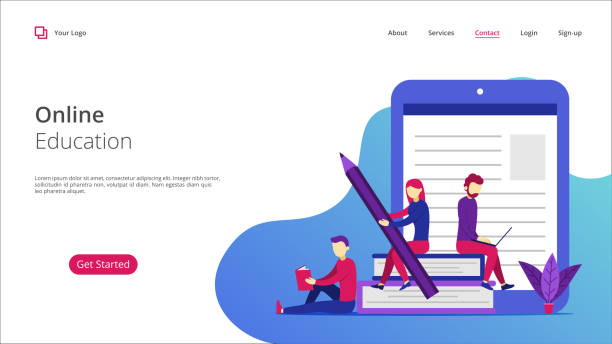
The world of web design is rapidly evolving, and keeping up with new trends is crucial for maintaining the appeal and functionality of your personal website.
This analytical and thought-provoking section explores the latest trends and provides a vision for the future of personal websites.
One of the most important trends is the focus on immersive and personalized user experience.
Users expect websites to be not only fast and user-friendly but also to provide content tailored to their interests and needs.
This includes using AI to recommend content and designing more intuitive user interfaces.
The thought-provoking content is: How can personal identity be integrated with these technological trends without compromising the website’s authenticity?
Another trend is minimalist design and simplicity, which emphasizes removing extraneous elements and focusing on core content.
This approach helps improve site loading speed and readability.
Also, extensive use of video and interactive animations to capture attention and convey messages more dynamically is a new trend.
Personal portal development is moving towards serverless websites and using APIs for integrating various services, which provides greater flexibility and scalability.
From a news perspective, recent news in web design indicates that Web 3.0 and blockchain technologies are also entering the realm of personal websites, enabling data ownership and decentralized digital identities.
Personal website design in the future will focus more on privacy, security, and user control over their data.
This educational aspect prepares you for a future where personal websites become smarter, more secure, and more integrated into our digital lives than ever before.
Is your company website as professional and trustworthy as it should be? With specialized corporate website design by RasaWeb, create an online presence that represents your credibility and attracts more customers.
✅ Build a powerful and professional image for your brand
✅ Convert visitors into real customers
⚡ Get a free website design consultation now!
Common Challenges and Solutions in Personal Website Design
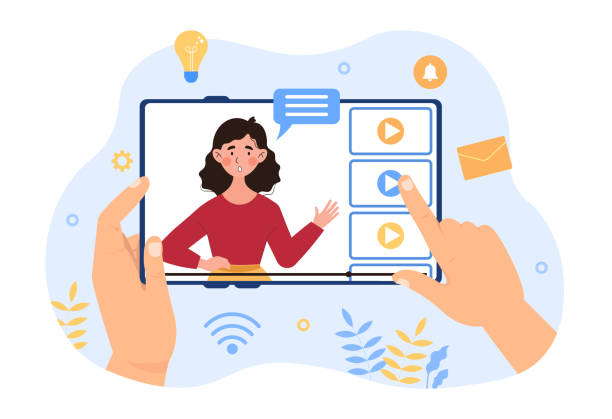
The path of personal website design is not always smooth, and you may encounter various challenges.
Understanding these challenges and knowing their solutions can help you proceed with more confidence.
This explanatory and specialized section addresses some of the most common obstacles and how to overcome them.
One of the main challenges is a lack of technical knowledge.
Many people want to have their own personal website but are not familiar with coding and technical concepts.
The solution is to use “Drag-and-Drop” platforms like Wix or Squarespace, which do not require coding, or to use WordPress with ready-made themes and plugins.
Additionally, free or paid online courses can also help you acquire the necessary skills.
Another challenge is producing continuous and quality content.
Maintaining a blog or updating a portfolio requires time and commitment.
The solution is to create a content calendar and have a regular plan for content production.
You can use AI tools for brainstorming ideas or even assisting with initial drafting.
A thought-provoking question here could be: how can one prevent burnout from website maintenance? The answer lies in automating some processes (like backups) and delegating some tasks to others if possible.
Website security is also a constant concern.
Cyberattacks, spam, and malware can harm your website.
The solutions are regular updates, using strong passwords, installing security plugins, and frequent backups.
Personal website design requires time and resource management.
By anticipating these challenges and preparing solutions, you can have a successful and sustainable website.
This guiding section helps you cope with challenges and turn your website building experience into an enjoyable and rewarding one.
Success and Maximizing the Utilization of Your Personal Website
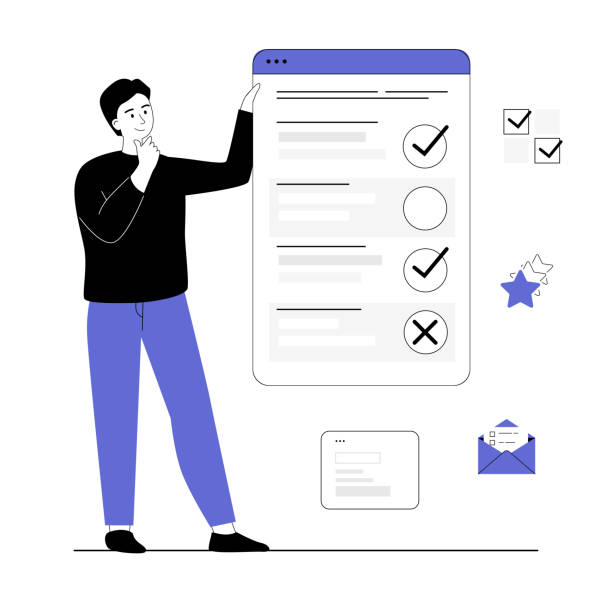
After completing all stages of personal website design, the ultimate goal is to achieve success and maximize its utilization.
This enjoyable and guiding section provides you with tips to ensure your website is not only seen but also achieves your goals.
The success of a personal website depends not only on the number of visitors but also on the extent to which your goals are achieved (such as attracting clients, finding a job, or building an online community).
For this purpose, data analysis is very important.
Use tools like Google Analytics to track traffic, user behavior, and traffic sources.
This information helps you identify your website’s strengths and weaknesses and make data-driven decisions for its improvement.
Always seek feedback from users.
Their opinions can provide valuable insights for improving your user experience and content.
Your personal website is a living entity that requires continuous updates and maintenance.
Add new content, keep the design up-to-date, and fix broken links.
Being active on social media and linking to your website helps maintain dynamism and increase visibility.
The thought-provoking content in this section is: how can a personal website be turned into a source of income? The answer lies in methods such as affiliate marketing, selling digital products, offering consulting services, or displaying advertisements.
Your personal website design has great potential for growth and for becoming a hub for your personal and professional brand.
With continuous effort and an analytical approach, you can leverage your website as a powerful tool to achieve your goals and create an impactful online presence.
This is a long-term investment that will yield high returns.
Frequently Asked Questions
| Question | Answer |
|---|---|
| What is a personal website? | A personal website is an online platform that an individual creates to showcase their information, resume, portfolio, interests, or ideas. This website serves as a digital business card and a hub for personal branding. |
| Why do I need a personal website? | Having a personal website helps you establish a professional online presence, showcase your skills and experiences, connect with your audience, find new job opportunities, and boost your personal credibility. |
| What content should I include on my personal website? | Typical content includes: About Me page (biography, education, experience), resume, portfolio (projects, articles, designs), blog (writings, insights), and contact information. |
| What are the essential steps to create a personal website? | The steps include: 1. Defining goal and audience 2. Choosing a domain name 3. Selecting hosting 4. Choosing a platform (e.g., WordPress or coding) 5. Designing and structuring 6. Content creation 7. SEO and optimization 8. Launch and maintenance. |
| Should I use a Website Builder or code it myself? | If you don’t have coding knowledge or are looking for a quick solution, website builders (like Wix, Squarespace) or CMSs (like WordPress) are good options. If you want full control and high flexibility and have technical knowledge, coding is the best way. |
| How important is design (appearance) for a personal website? | Website design is very important. An attractive, user-friendly, and professional design ensures visitors have a good experience, stay longer on the site, and take your personal brand seriously. Poor design can have a negative impact. |
| What is Responsive Design and why is it important? | Responsive design means designing a website whose appearance and functionality automatically adapt to the screen size of the user’s device (desktop, tablet, mobile). This feature is crucial for ensuring a good user experience across all devices. |
| How can I choose a good domain name for my personal website? | The domain name should be related to your identity (usually your first and last name), short and memorable, easy to pronounce, and avoid excessive numbers or hyphens. Common extensions like .com or .ir are usually preferred. |
| What is Web Hosting? | Web hosting is space on an internet-connected server that stores your website files (such as codes, images, videos) and makes them available to users 24/7. Without hosting, your website will not be accessible. |
| How can I promote my personal website? | You can use social media, search engine optimization (SEO), content marketing (blogging), sharing links in email signatures, and networking with others in your field to promote your website. |
And other advertising services from Rasa Web Advertising Agency:
Examining the Impact of Language and Writing Style on Attracting Industrial Customers
The Role of Quality Assurance in the Success of Kitchen Appliance Ads
How to Use Professional Job Photos in Advertisements
Investigating the Importance of Catchy Headlines in Industrial Advertisements
Strategies to Increase Conversion in Industrial Website Ads
And over a hundred other services in the field of internet advertising, advertising consultation, and organizational solutions
Internet Advertising | Advertising Strategy | Advertorials
🚀 Transform your business’s digital presence with RasaWeb’s internet advertising strategies and advertorials.
📍 Tehran, Mirdamad Street, next to Bank Markazi, Southern Kazeroon Alley, Ramin Alley, No. 6

